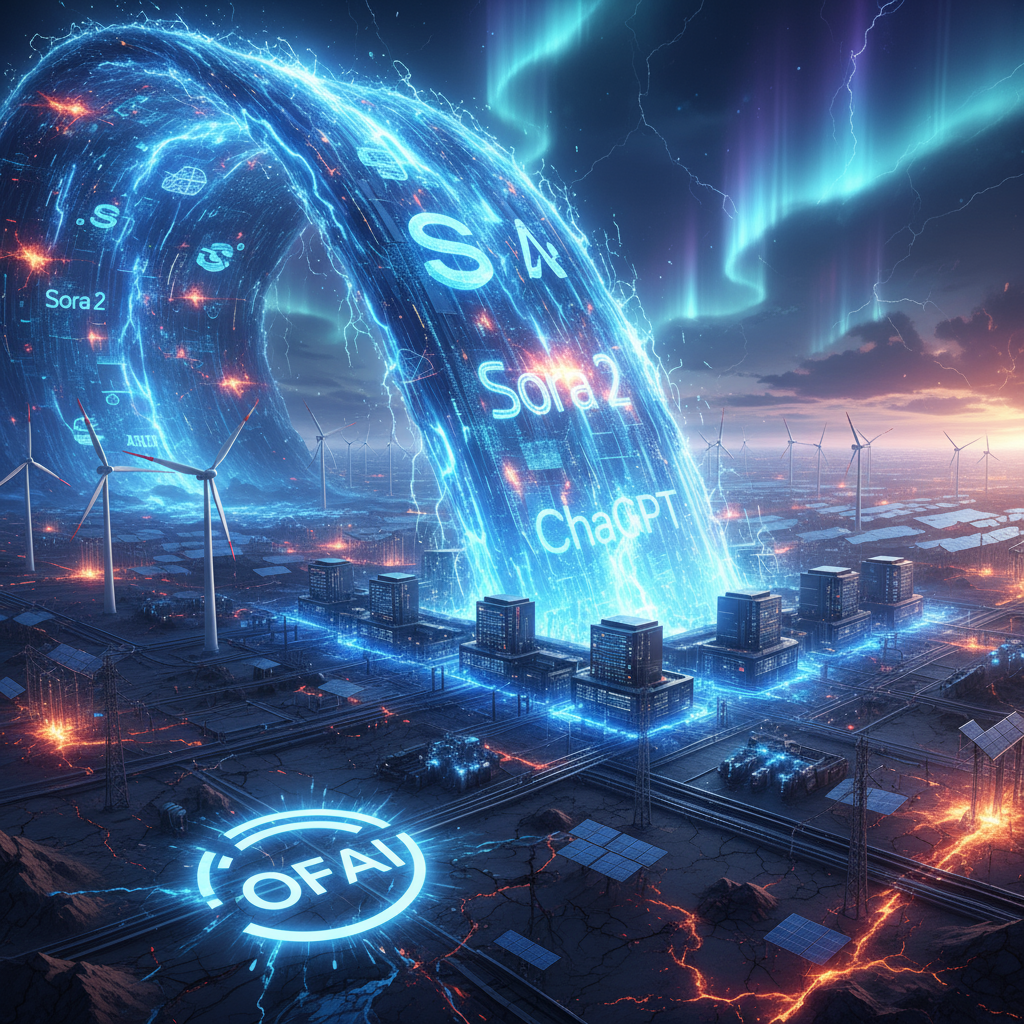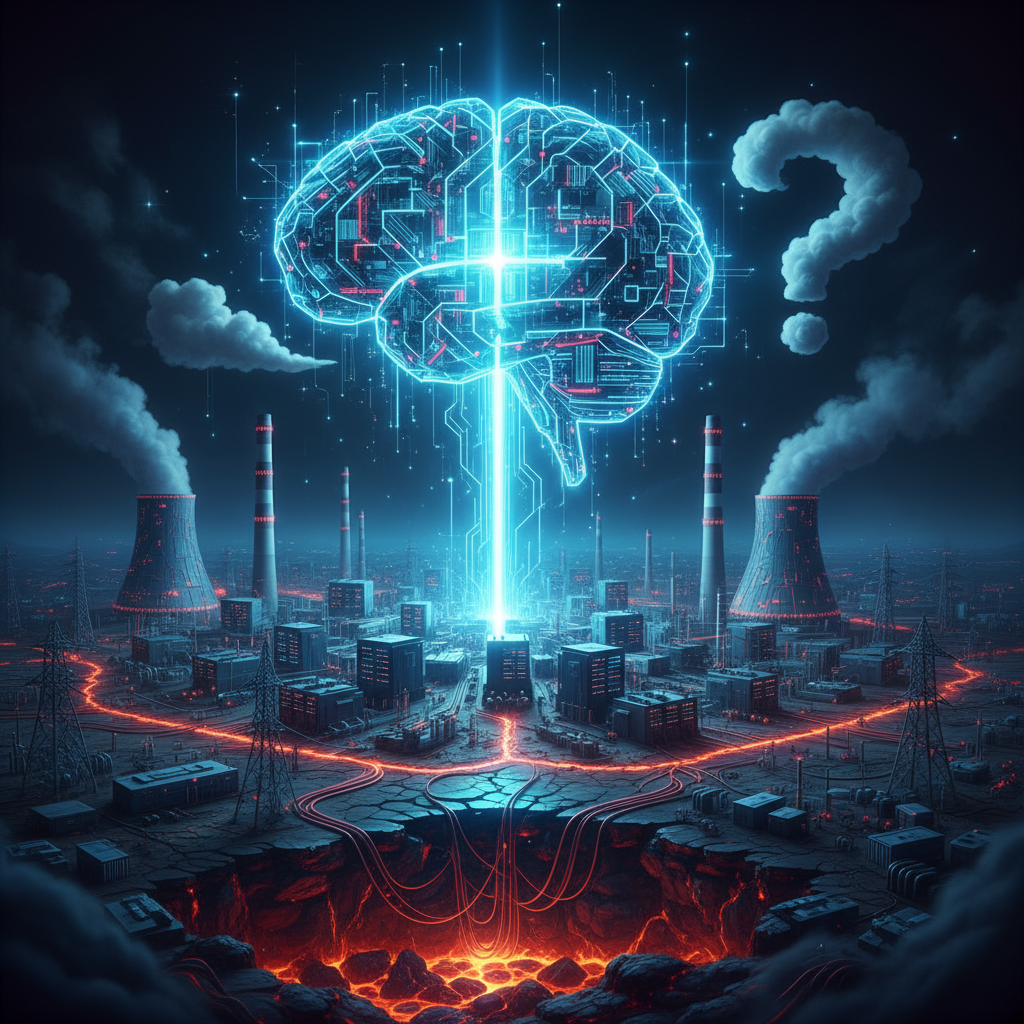The AI Energy Avalanche: OpenAI’s 10 Gigawatt Gamble

The digital world is buzzing, and it’s not just the hum of servers. There’s a growing awareness of the sheer, insatiable hunger of artificial intelligence for energy. From generating breathtakingly realistic video with Sora to crafting intricate text with ChatGPT, OpenAI’s groundbreaking models are pushing the boundaries of what AI can do. But this technological marvel comes with an unprecedented energy cost, vividly illustrated by OpenAI’s recent colossal 10-gigawatt energy deal. This isn’t just a ripple in the tech world; it’s a tidal wave that demands our attention.
For context, ten gigawatts is a staggering amount of power. It’s equivalent to the output of several large nuclear power plants or enough to power millions of homes. This single deal underscores a critical, often-overlooked aspect of the AI revolution: its profound environmental footprint and the escalating demand it places on our global energy infrastructure. As AI becomes more sophisticated and integrated into our daily lives, its energy appetite will only grow, forcing us to confront difficult questions about sustainability, innovation, and our planet’s future.
The “Why”: Unpacking AI’s Energy Intensive Nature

Why do advanced AI models like Sora 2 and ChatGPT consume such astronomical amounts of energy? The answer lies in the very fabric of their operation. These models are essentially vast neural networks, comprising billions, even trillions, of parameters. Training these models involves feeding them immense datasets – think petabytes of text, images, and video – and fine-tuning these parameters through countless computations. Each computation requires electrical power, and when scaled across billions of operations, the energy draw becomes immense.
Consider the process of generating a photorealistic video with Sora 2. It’s not just retrieving pre-existing footage; it’s creating entirely new imagery, frame by frame, often from a simple text prompt. This involves complex algorithms understanding context, anticipating movement, and rendering detailed visuals. Similarly, ChatGPT, even in its conversational mode, isn’t just looking up answers; it’s performing real-time inference, predicting the most probable next word or phrase in a complex sequence, all based on its immense training data. This continuous, high-intensity processing is what drives the significant energy consumption.
Furthermore, the cutting edge of AI development often prioritizes performance and accuracy over energy efficiency. Researchers and developers are pushing the limits of what’s possible, and while optimization is a goal, the primary driver is often to achieve breakthrough capabilities. This continuous pursuit of more advanced, more capable AI will undoubtedly lead to even greater energy demands unless significant shifts in hardware and software design occur.
The “How”: Data Centers, Cooling, and Infrastructure
The physical manifestation of AI’s energy hunger is found in massive data centers. These aren’t just server rooms; they are sprawling complexes designed to house thousands of powerful GPUs, which are the workhorses of AI computation. Each GPU consumes significant power, generates immense heat, and requires constant, elaborate cooling systems to prevent overheating. The energy used for cooling can sometimes rival the energy consumed by the computing itself.
To put a 10-gigawatt deal into perspective, imagine the immense scale of the infrastructure required to deliver and manage that power. It involves secure and reliable energy sources, robust transmission lines, and advanced power management systems within the data centers themselves. This isn’t just about plugging in a few more servers; it’s about building entirely new, energy-intensive ecosystems to support the relentless growth of AI.
The geography of these data centers also becomes crucial. Factors like access to stable and affordable electricity, proximity to renewable energy sources, and even climate for natural cooling are becoming increasingly important considerations for AI companies. This massive infrastructure investment highlights that AI is not just a digital phenomenon; it has a significant and tangible physical footprint on our world.
The “What Now?”: Navigating the Green AI Challenge
OpenAI’s massive power deal is a stark reminder that the AI revolution, while transformative, is not without its environmental costs. This raises critical questions about the sustainability of our technological progress. Can we continue to innovate at this pace without severely impacting our planet? The answer lies in a multi-faceted approach to “Green AI.”
Firstly, there’s a strong imperative for research and development into more energy-efficient AI algorithms and hardware. This includes exploring new computing paradigms beyond traditional GPUs, such as neuromorphic computing, and developing more power-optimized neural network architectures. Software optimization also plays a crucial role, ensuring that AI models are not just powerful but also computationally lean.
Secondly, the focus must shift towards powering AI from renewable energy sources. OpenAI’s significant energy deal presents an opportunity to drive investment in solar, wind, and other clean energy technologies. Companies developing and deploying AI have a responsibility to work with energy providers and governments to build a sustainable energy infrastructure that can meet their growing demands. This transition isn’t just about environmental responsibility; it can also offer long-term economic stability by decoupling AI’s energy costs from volatile fossil fuel markets.
Finally, we need to foster a culture of responsible AI development and deployment. This means considering the energy footprint of an AI model from its inception, exploring trade-offs between performance and efficiency, and prioritizing AI applications that deliver significant societal benefits proportional to their energy consumption. The conversation about AI’s capabilities must now be inextricably linked with its environmental impact.
The Future is Electric (and AI-Powered)
OpenAI’s latest 10-gigawatt energy deal is more than just a business transaction; it’s a bellwether for the future. It signals an era where the immense power of AI will be matched by its colossal energy needs. While the transformative potential of AI is undeniable, we cannot ignore the environmental implications. The path forward demands innovation not just in AI itself, but in how we power it.
As we marvel at the creative prowess of Sora 2 and the conversational fluency of ChatGPT, we must also recognize our collective responsibility to ensure that this technological progress is sustainable. The future of AI is bright, but it must also be green. This colossal energy deal should serve as a powerful catalyst for a global conversation and concerted effort towards building a truly sustainable AI revolution.

